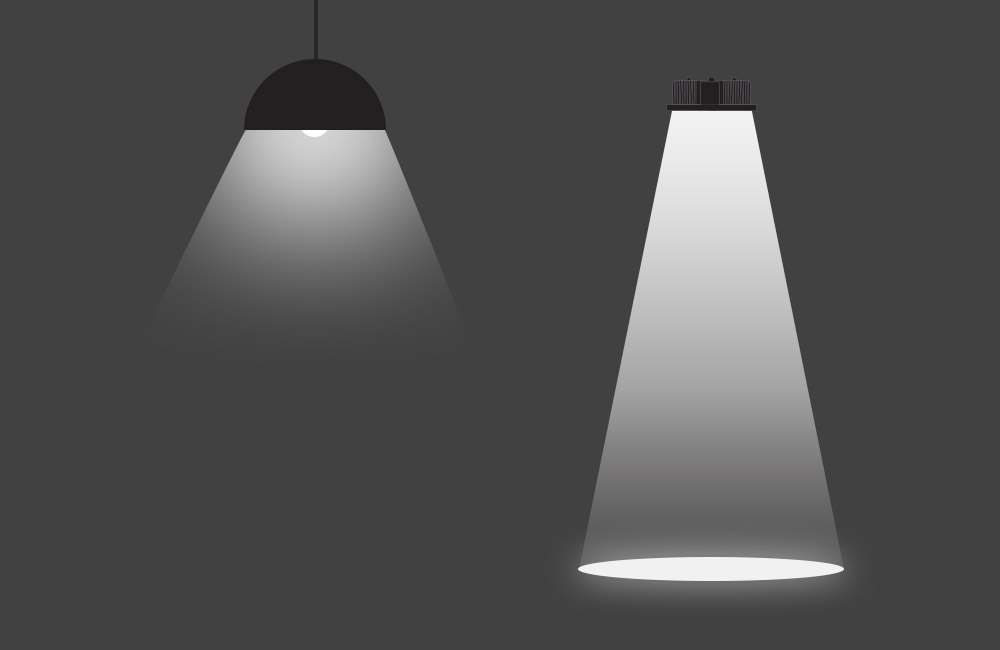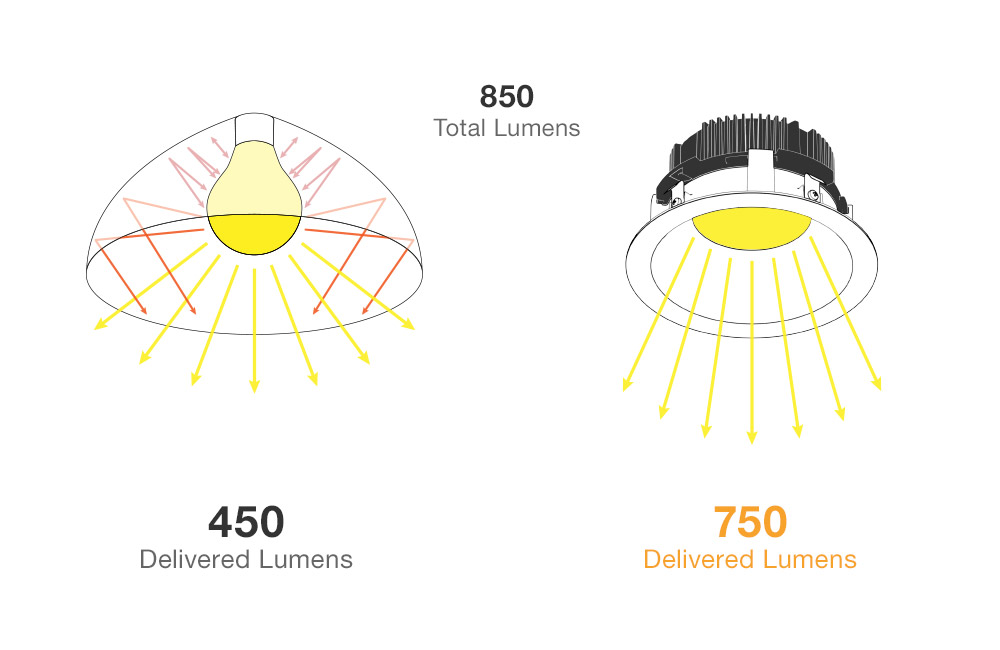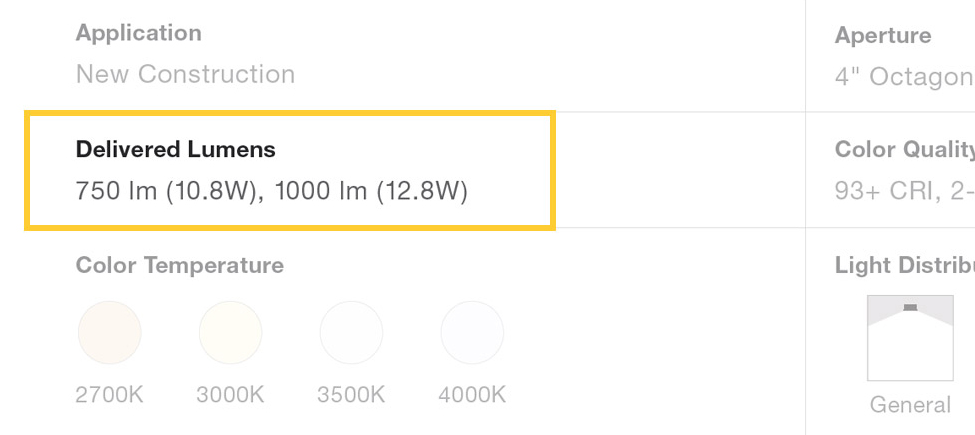
As manufacturers shift away from watts (a unit of power) to measure light output, take note of the units advertised. While lumens are a more accurate measure, there is an important distinction between total and delivered lumens.
Total vs. Delivered
As the name suggests, total lumens measure the total light emitted from a source in all directions. This can include light emitted into the ceiling or within the fixture. Delivered lumens takes into account additional factors, such as reflection or refraction, to only measure the light in the space. The light exiting the fixture into the space (delivered lumens) can measure 20% to 50% less than the light generated (total lumens).

Delivered lumens measures how much light you are actually buying for your space, rather than how much light the module produces in a lab.
Engineered to Deliver
With each light reflection, some of the light gets lost, resulting in wasted power. At DMF Lighting, we’ve specifically designed our recessed LED downlights to maximize the delivered lumens of the light output. Our engineers include premium reflectors, diffusers, and lenses to enhance optical control. They design sleek, unobtrusive trims without dramatic cutoffs. And, they ensure all components of the luminaire work together to minimize wasted light.

When reading labels or spec sheets, it’s important to know whether you are reading total or delivered lumens. For simplicity and accuracy, DMF distinguishes between delivered and total lumens. This way, specifiers, architects, and lighting designers can properly light a space. Make sure to check spec sheets carefully to know which metric is used.

(DMF DRD2 Spec Sheet example)
If you’re struggling to pick the right lights for your space or have any questions, please send us a message.
_ _ _ _ _ _
Follow us on Facebook, Instagram and Twitter to stay up to date with everything that’s happening at DMF Lighting.
